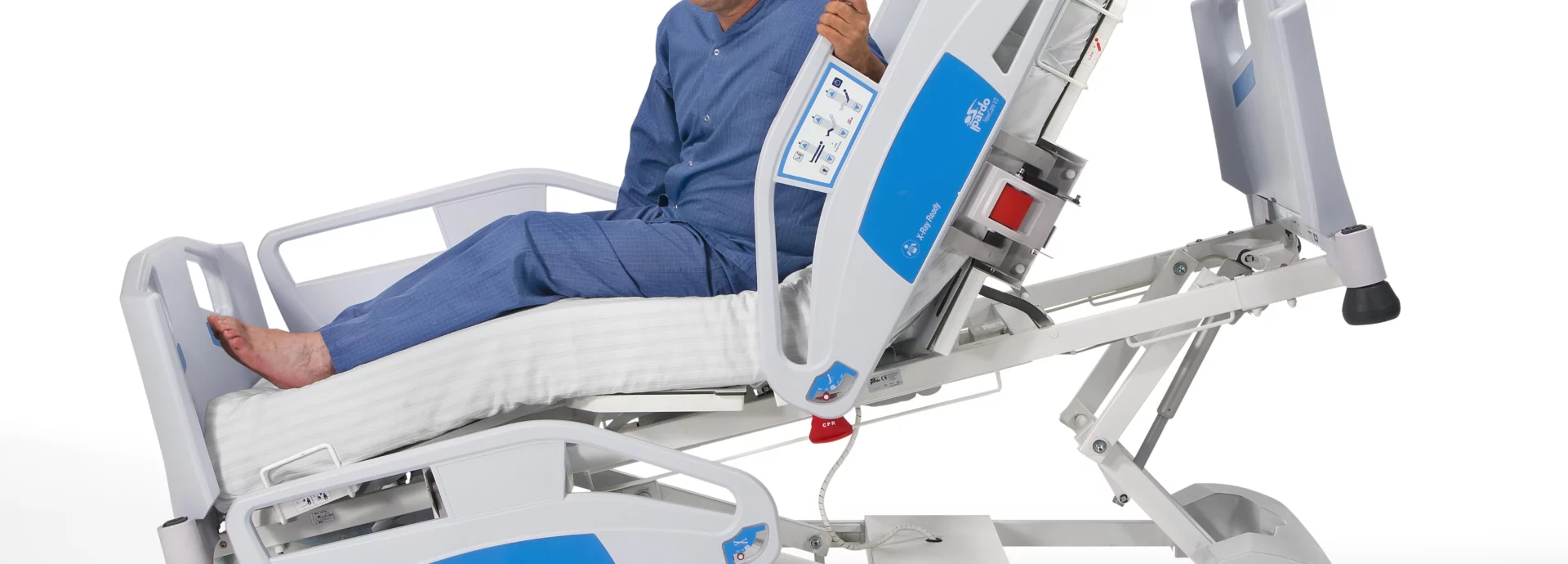Are hybrid mattresses any good?
Posted on 2 November 2016 By Aaron Stretton

In This Article
Over the past couple of years, we’ve seen hybrid mattresses become more and more prominent in the healthcare sector. Sometimes…
Over the past couple of years, we’ve seen hybrid mattresses become more and more prominent in the healthcare sector. Sometimes overtaking its foam and air predecessors, the hybrid is causing quite a stir in hospitals and hospices.
Of course, their new popularity has brought into question their efficiency and how they’re supposedly better than foam and air mattresses. How are they different? What benefits do hybrid mattresses offer? Are they even any better than what’s already on the market?
Comfort
First and foremost, hybrid mattresses offer excellent comfort to individuals. Whereas foam mattresses don’t always suit those with higher pressure relief needs, and air mattresses can give patients nausea from vibration, the hybrid combines softness and support to give unrivalled results.
Some hybrid mattresses have a unique cell structure; rather than the cells being just foam or just air, the two are combined to create a surface that is both soft and supportive. The foam in the cells dull the vibration of the pump, yet still provides air flow to contour to the individual’s shape. This is a remarkable evolution of prior mattresses. The cell structure also gives greater support as it creates a flatter-top to the mattress itself.
The combination of these features also solves another issue that usually arises with other mattresses — transfers. Rather than having to move a patient from a foam mattress to an air one (or vice versa), a hybrid mattress can simply be altered through the optional pump. Of course, adding the pump will enhance the air features, whereas having no pump still leaves you with a fully-functional foam mattress. This simple solution removes the issue of transfers entirely, which is priceless in patient care.
Quiet
One of the things that patients always point out in regards to the air mattress is the noise of the pump. Even though it is helping to keep the user comfortable and healthy, it proves to be somewhat of a bother what with the constant ‘buzz’. In turn, this can affect the individual’s sleep, or even their mood, especially when bedbound.
Hybrid mattresses use an evolved version of this pump that’s much quieter. This is because the pump is smaller, as hybrid mattresses require less air. The half-and-half foam and air cell structure means that less air is needed to be pumped through the mattress. This hybrid benefit is an easy way to combat the annoyance of loud pumps, thus creating a more calming environment for the user.
There is also no worry in a power outage; hybrid mattresses still offer support and security when the pump is unavailable.
Convenient & Simple
Perhaps one of the more straightforward benefits of a hybrid mattress is the fact that it saves space; it’s two mattresses in one. It’s also particularly cost-effective. Air mattresses can cost anything between £500 and £4000. Hybrids are around the same price range (depending on what features you want to be included). This is a pretty good deal to think you’re getting two mattresses in one!
Another facet of a select few hybrid mattresses is their amalgamation of pressure relief and pressure redistribution. This double-team approach to pressure ulcer prevention and management shows a great evolution of the ways in which patient care can be improved through the adoption of new technology and equipment.
However, hybrid mattresses are not quite without fault. Although we strongly believe that they are an immeasurable step forward in simplifying and enhancing patient care, there are still things to be considered in their development. Whilst they do offer pressure relief, traditionally it hasn’t been quite to the same level as an air mattress. That being said, hybrids are constantly being evolved and advanced to improve on these issues.
The Achilles Heel of hybrid mattresses thus far has been their susceptibility to infection. As they have a foam core, if the cover of the mattress is damaged at all, then infection control is a big issue. An entirely new mattress would be necessary to rectify this, yet it is worth noting that steps are being taken to ensure that hybrid mattresses are almost entirely impenetrable. For instance, the Somlent Range offers an additional lining cover that will protect the foam from any possible exposure.
So are hybrid mattresses any good? In short, yes. They’re revolutionary in their adoption of beneficial features of both foam and air mattresses. The 2-in-1 functionality of these items make them ideal in hospice and hospitals because they save space and make patient comfort much easier to manage. The cost of the hybrids can’t be sniffed at in terms of what they offer. There are still a few creases to be ironed out, but hybrids are the future of hospice and hospital care. The real question is, can you afford not to be using them?
We think you might also be interested in...
Speak to The Experts
Need assistance with product enquiries, general inquiries, or product support? Our Phonelines are open 9am - 5pm Monday to Friday
0113 519 0319
Or, fill out the form for a call back.
